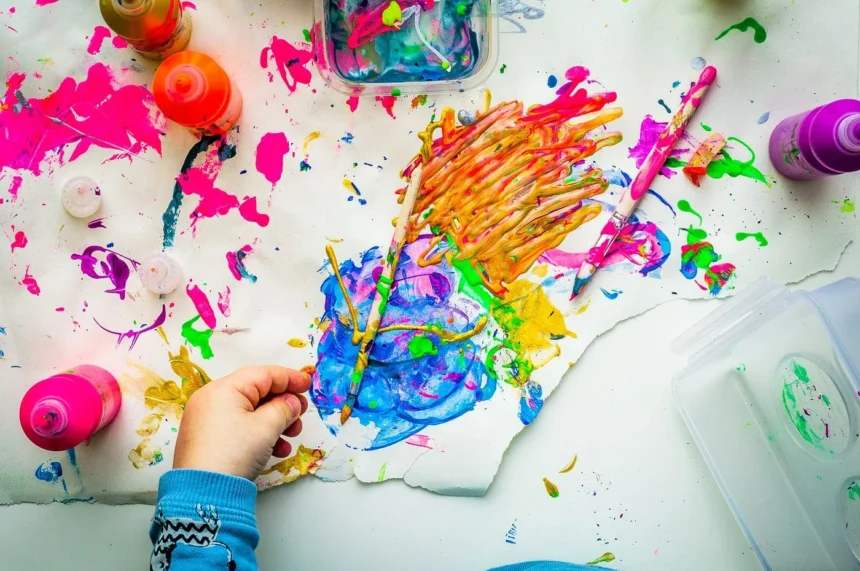Step back in time and open a door to a world of creativity, expression, and cultural significance. Ancient artz offers us a glimpse into the lives, beliefs, and values of civilizations that shaped our history. From intricate pottery to grand sculptures, each piece tells a story steeped in tradition and meaning.
Have you ever wondered what inspired these artists? Or how their works continue to resonate today? Join me on this journey as we explore the fascinating realm of ancient artz—where every brushstroke reveals secrets of the past and ignites curiosity about our shared human experience.
What is Ancient Art?
Ancient artz encompasses a vast array of creative expressions crafted by early civilizations. It includes paintings, sculptures, pottery, textiles, and architectural marvels that emerged thousands of years ago.
This form of artistry is more than mere decoration; it serves as a window into the cultural psyche. Each piece reflects the beliefs, traditions, and daily lives of its creators.
From cave paintings depicting hunts to grand temples adorned with intricate carvings, ancient artz captures moments frozen in time. These works often convey spiritual significance or commemorate historical events.
Artists utilized natural materials like clay and stone to bring their visions to life. The techniques varied widely across regions but shared a common goal: storytelling through visual means.
Today’s appreciation for these creations offers insights into our collective heritage while highlighting the universal nature of artistic expression throughout history.
The History and Origins of Ancient Art
Ancient artz emerged as a powerful expression of humanity’s earliest thoughts and beliefs. Its origins can be traced back tens of thousands of years, with cave paintings in places like Lascaux and Altamira revealing the creativity of early humans. These images often depicted animals, symbols, and rituals that held significance for their communities.
As civilizations developed, so did artistic styles. The Egyptians created intricate hieroglyphics and monumental structures reflecting their religious values. Meanwhile, the Greeks embraced realism through sculpture and pottery that celebrated human form and mythology.
In Mesopotamia, art served to honor gods and commemorate kings. Each region cultivated distinct techniques while sharing common themes: life, death, nature, and spirituality. This rich tapestry laid the groundwork for future artistic movements across cultures.
The evolution continued as trade routes opened up exchanges between different societies—melding traditions into what we now recognize as ancient artz.
Styles and Techniques of Ancient Art
Ancient artz showcases a remarkable diversity of styles and techniques that reflect the cultures from which they emerged. Each civilization developed its unique expressions, influenced by local resources and beliefs.
For instance, Egyptian art is renowned for its adherence to strict guidelines. Symmetry and proportion were paramount, aiming to convey eternity rather than realism. The use of bold colors symbolized various aspects of life and the afterlife.
In contrast, Greek art flourished with an emphasis on naturalism. Sculptors like Phidias captured human emotion through intricate details in marble statues. The Greeks valued balance and harmony in their creations.
Meanwhile, ancient Asian artists adopted fluid brushwork techniques that conveyed movement and spirituality. Ink wash painting became a revered method for expressing nature’s beauty.
These diverse approaches highlight not only artistic innovation but also cultural narratives deeply embedded within each piece of ancient artz.
Most Famous Examples of Ancient Art
Among the most iconic examples of ancient art is the Parthenon in Athens. This temple dedicated to Athena showcases stunning Doric architecture and intricate sculptures that tell stories of mythology.
Another remarkable piece is the Rosetta Stone, discovered in 1799. It was crucial in deciphering Egyptian hieroglyphs, serving as a bridge between languages and cultures.
The Terracotta Army stands out as well. Discovered near Xi’an, China, these life-sized statues were crafted to accompany Emperor Qin Shi Huang into the afterlife. Each figure exhibits unique features and expressions.
We cannot overlook the cave paintings found at Lascaux in France. They date back around 17,000 years and depict animals in vivid detail. These artworks reveal early humans’ connection with their environment and provide insight into their lives.
Impact and Influence of Ancient Art on Modern Society
Ancient artz continues to shape the modern world in countless ways. Its influence is evident in contemporary design, architecture, and even fashion. Artists today draw inspiration from the techniques and themes explored by their ancient predecessors.
The symbols found in ancient sculptures or pottery often resurface in modern graphics and branding. These motifs carry a sense of history that resonates with people looking for authenticity.
Moreover, ancient art serves as a bridge connecting us to our shared human experience. The stories told through these works transcend time and cultures, reminding us of our common heritage.
Museums around the globe showcase ancient artifacts, sparking curiosity among visitors. This exposure fosters appreciation for diverse artistic expressions while encouraging dialogue about cultural significance.
In classrooms, educators use ancient artz to teach critical thinking skills. Analyzing these pieces encourages students to explore context and meaning beyond mere aesthetics.
How to Appreciate and Understand Ancient Art
Appreciating ancient art requires an open mind. Each piece tells a story that transcends time and culture.
Start by observing the details. Notice the craftsmanship, colors, and materials used. These elements often reflect the values and beliefs of their creators.
Context is crucial. Research the historical background behind each artwork. Knowing its origins can enhance your understanding and appreciation significantly.
Engage with different styles from various cultures. Explore how ancient artz varies between civilizations like Egypt, Greece, or Mesopotamia.
Visiting museums or exhibitions brings artworks to life in ways books cannot capture. Observe them up close; feel their presence.
Discussing these pieces with others can deepen your insights as well. Different perspectives can reveal meanings you might not have considered before.
Allow yourself to experience emotions evoked by ancient artz – whether it’s awe, curiosity, or inspiration – embrace them fully.
Conclusion
Ancient artz serves as a powerful bridge to our past. It reflects the beliefs, customs, and aspirations of ancient civilizations. Each piece tells a story that transcends time and geography.
Understanding ancient art is more than just appreciating its beauty. It’s about connecting with humanity’s shared history. The creativity showcased in these works continues to inspire artists today.
As we explore the techniques and styles from different cultures, we gain insight into their worldviews and values. This appreciation not only enriches our knowledge but also deepens our emotional connection to the human experience.
Engaging with ancient artz opens up a dialogue between us and those who lived centuries ago. It’s an invitation to ponder life’s profound questions while reflecting on how far we’ve come.
The legacy of ancient art remains vital in shaping contemporary culture, reminding us of our roots even as we forge ahead into the future. Embracing this timeless treasure allows us to celebrate creativity across generations and foster a deeper understanding of what it means to be human.










